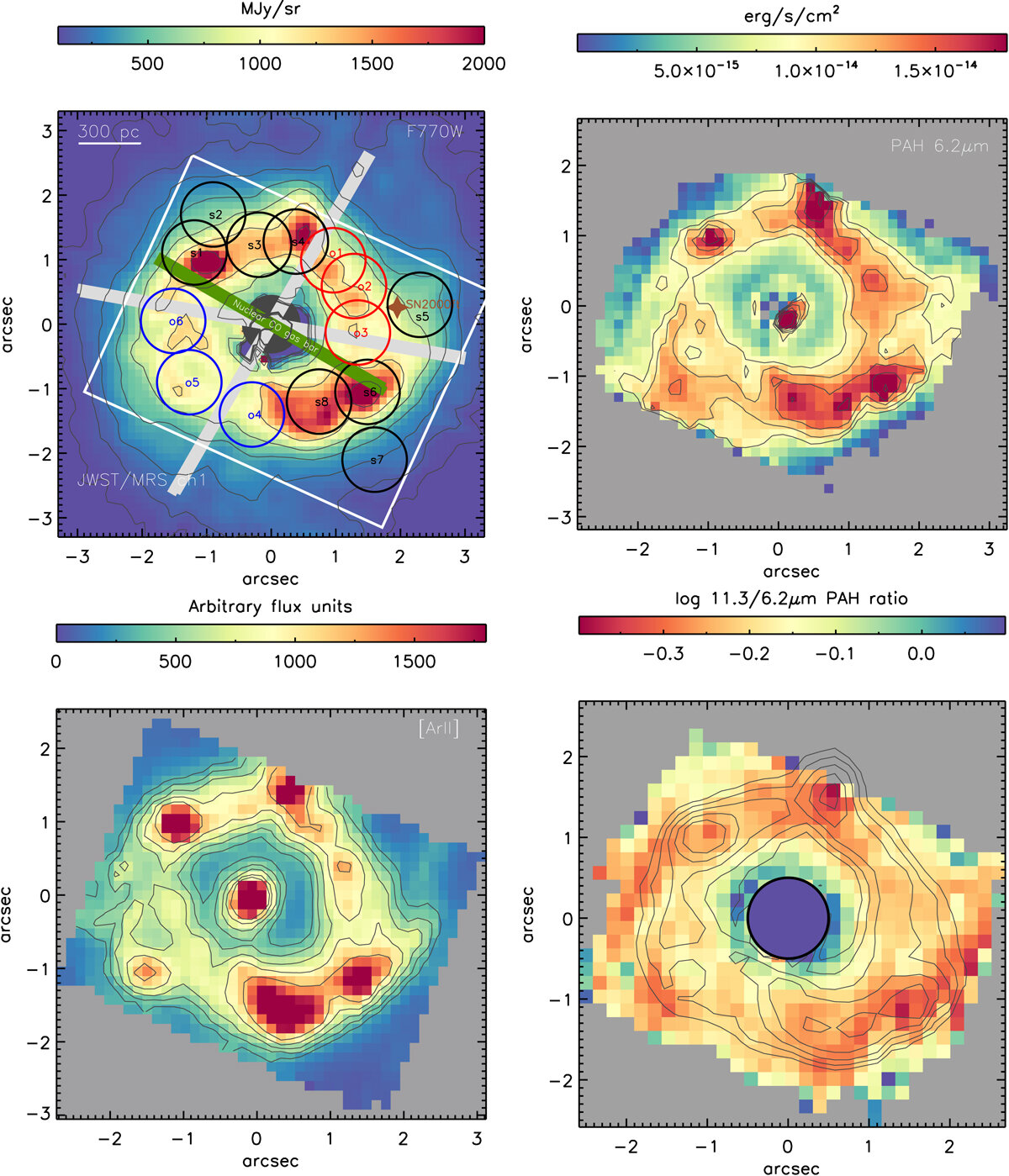
PAH tagged posts


An asteroid belt orbits a star in this artist’s rendering. In a new study, experiments at Berkeley Lab explored possible chemical pathways that could form complex hydrocarbons — like those found in some meteorite samples – in space. Credit: NASA/JPL-Caltech
Experiments reveal how a hydrocarbon called pyrene could form near stars. Scientists have used lab experiments to retrace the chemical steps leading to the creation of complex hydrocarbons in space, showing pathways to forming 2D carbon-based nanostructures in a mix of heated gases...
Read More
This artist’s conception symbolically represents complex organic molecules, known as polycyclic aromatic hydrocarbons, seen in the early universe. These large molecules, comprised of carbon and hydrogen, are among the building blocks of life. NASA’s Spitzer Space Telescope is the first telescope to see polycyclic aromatic hydrocarbons so early–10 billion years further back in time than seen previously. Credit: NASA/JPL-Caltech/T. Pyle (SSC)
DIBs (diffuse interstellar bands) are a collection of about 400 absorption bands that show up in spectra of light that reaches the earth after traversing interstellar medium. Indications exist they may arise from the presence of large hydrocarbon molecules. Recent experiments lend novel credibility to this hypothesis.
Among the hydrocarbons that are p...
Read More






Recent Comments